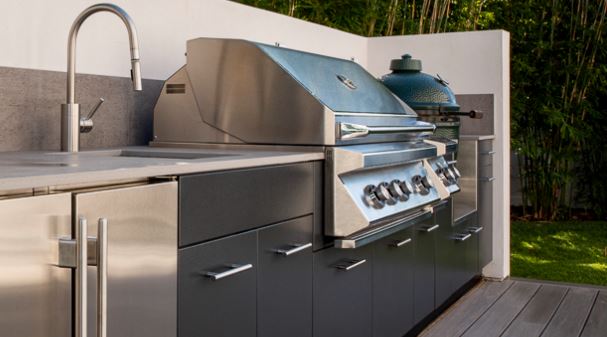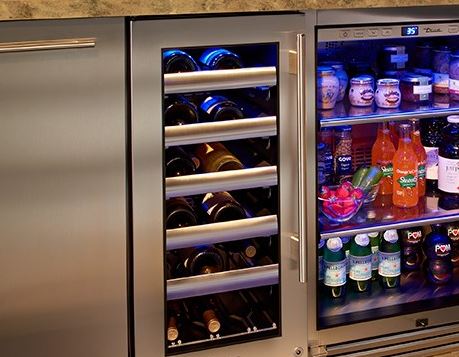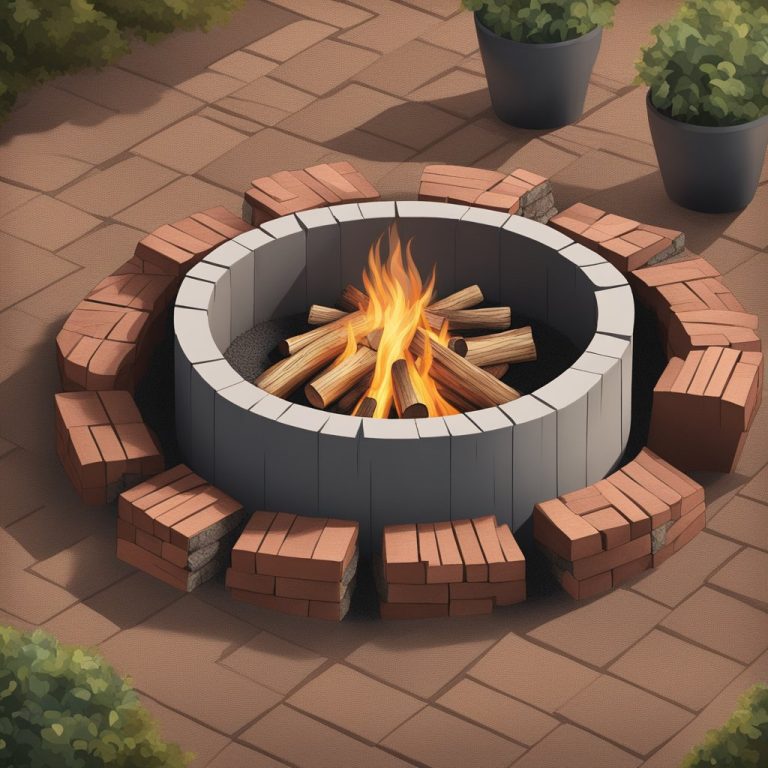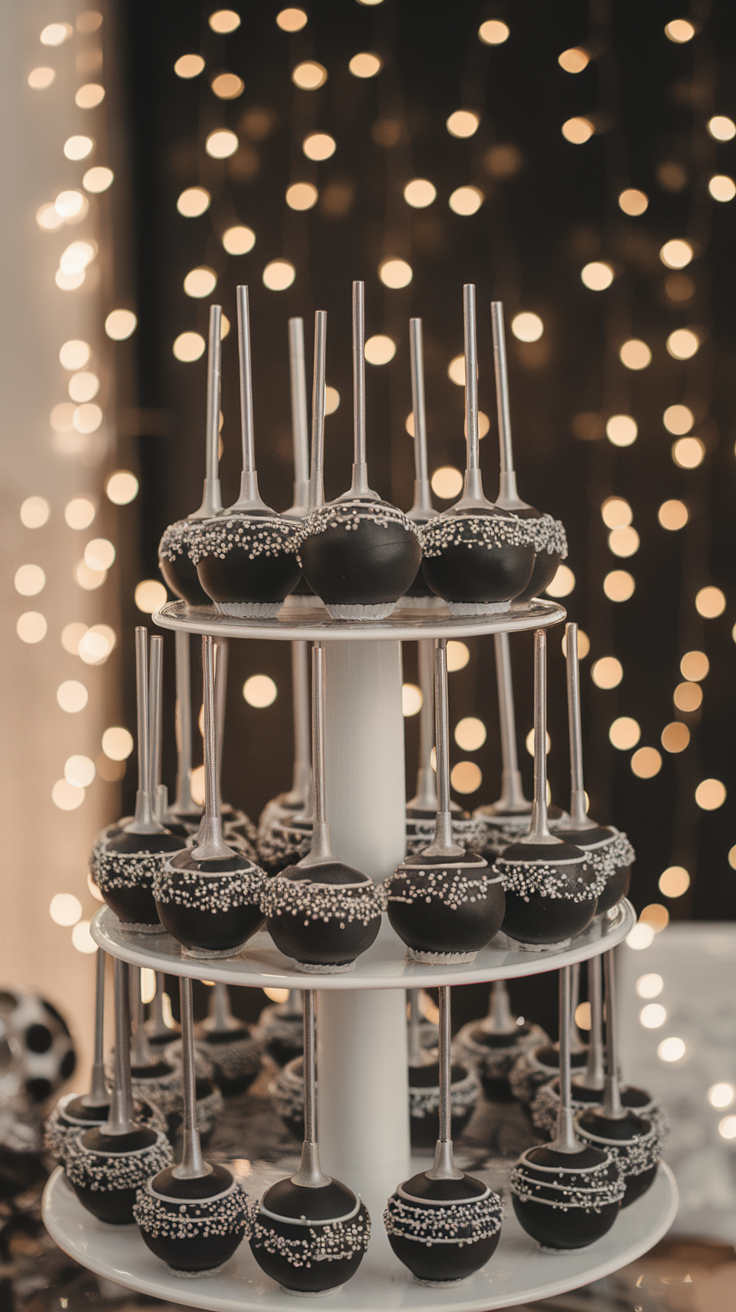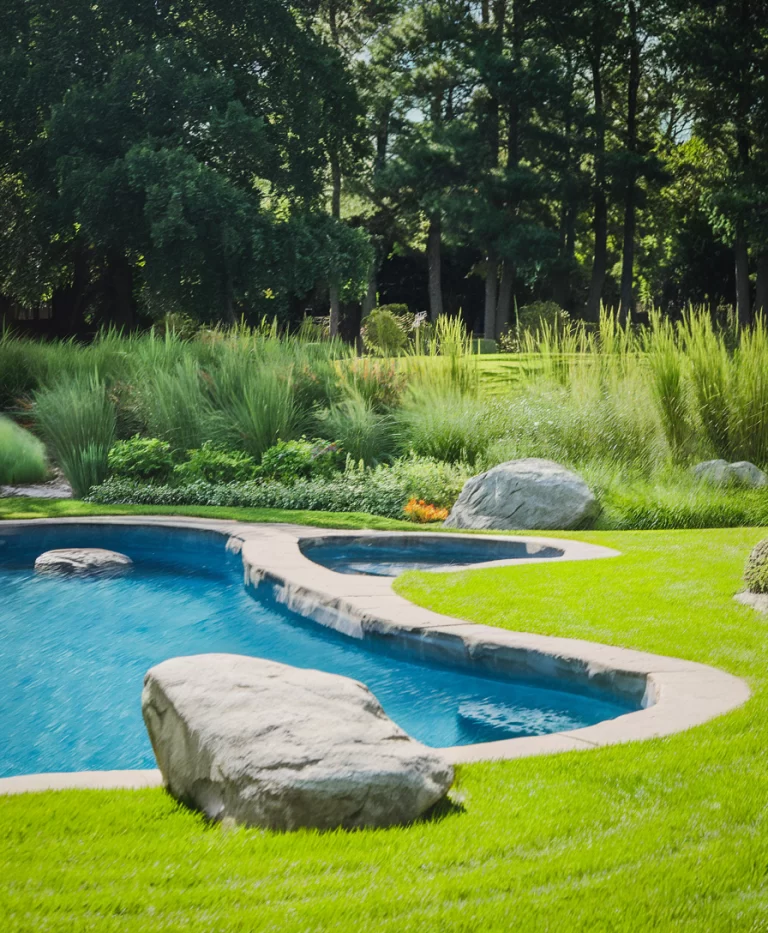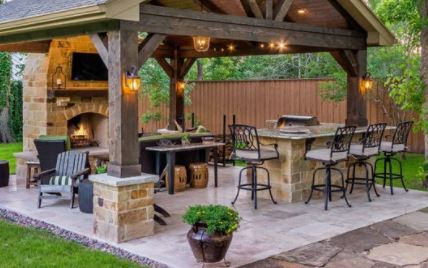Stainless Steel Outdoor Kitchen Cabinet Guide
Guide to Outdoor Stainless Steel Cabinets
For many outdoor enthusiasts, the ultimate backyard kitchen starts with stainless steel outdoor kitchen cabinets. Stainless steel is a top choice because of its weather resistant properties and its heavy duty strength.
Homeowners love them for outdoor kitchens and any application where strength and beauty are priorities.
Outdoor kitchen builders can buy pre-assembled modular cabinets which can be assembled in any configuration to create a sizable cooking and entertaining space. DIYers who have built their own masonry or wood frames will delight in knowing that they can buy individual components such as a grill cabinet or a single access door panel to put the finishing touch on their bbq island or for their pizza ovens’ base.
How are Stainless Steel Cabinets Fabricated?
Making stainless steel cabinetry is done through a process called metal fabrication. It involves using sheets of steel that are cut, bended and welded together to form the pleasing shapes and functional parts of a stainless steel cabinet.
A cabinet is basically a box that is solid on 5 sides. The sixth side encompasses the face frame which is usually what you see when you look straight on at a row of cabinets.
When making stainless steel cabinetry, the first challenge is the cost of the material (about twice the cost of regular steel). Then there’s the requirement that the end product be aesthetically pleasing, with an attractive finish, and functional features that make the cabinet useful in an outdoor kitchen or other space. This requires intentional care in handling the raw stainless steel sheets and custom metal fabrications in process to avoid scratches, dents, or damage.
There are specialized and unique equipment capabilities that are required for stainless and decorative metal fabrication. High end fabricators use a fiber laser to achieve precise cutting at amazing cut speeds.
A specialized twin-belt sander is used for putting exceptionally consistent and beautiful grain into stainless steel. Additionally, significant investment is required for bending tooling to make sure there are precise bends without marring or bend marks.
Not only is stainless steel expensive, the physical characteristics of the metal leads to significant expansion and distortion when welding. It’s notoriously difficult to achieve warp-free, dimensionally accurate results that meet the aesthetic requirements of outdoor cabinetry and is one of the reasons that outdoor cabinetry made from stainless steel are pricier than other options you might be looking at.
What kind of Stainless Steel are Outdoor Cabinets Made from?
There are two grades of stainless that are used in the fabrication of austenetic (type of alloy) stainless steel. Type 304 is non-magnetic, resistant to corrosion, and is durable. Type 304 is immune to foodstuffs, sterilizing solutions, most organic chemicals and dyestuffs, and a wide variety of inorganic chemicals. Because 304 can withstand the corrosive action of various acids found in fruits, meats, milk, and vegetables, it is used for sinks, tabletops, stoves, refrigerators, and steam tables. It is also used in numerous other utensils such as cooking appliances, pots, pans, and flatware.
316 grade stainless steel is the next most common; for food and surgical stainless steel uses. Alloy addition of molybdenum prevents specific forms of corrosion. Also known as “marine grade” stainless steel due to its increased ability to resist saltwater corrosion compared to type 304 and is advertised as thus by some outdoor stainless steel cabinet manufacturers and outdoor appliance makers.
Advantages and Disadvantages of Stainless Steel Outdoor Cabinets
The advantages of stainless steel used to fabricate outdoor kitchen cabinetry make them a top choice for homeowners and kitchen designers. The major pluses are:
Resistance to Bacteria and Fungi
Stainless steel provides non-porous work surfaces that are impervious to liquids, bacteria, fungus, and mildew. Bacteria, fungus, and dirt have nowhere to hide as a result.
The risk of germs spreading or cross contamination is greatly decreased when basic sanitation techniques are followed.
Resistant to Moisture
Low carbon steel with chromium and nickel is used to make stainless steel. Its resistance to rust and corrosion is due to the presence of chromium.
Moisture isn’t an issue because rust isn’t an issue. Stainless steel is therefore ideal for use near an outdoor sink or in the rain.
Chemical Resistance
Chemical resistance is high in stainless steel. The majority of salts, organic compounds, solvents, and biological stains do not pose a problem.
The use of a few severe acids (acetic acid, phosphoric acid, sulfuric acid) and bases (sodium hydroxide) with stainless steel is not recommended.
Heat Tolerance
Stainless steel has a nickel content that makes it heat resistant. It can withstand continuous heat exposure of up to 1500 degrees Fahrenheit. With extended high temperatures, there may be some discoloration, but “it can withstand the heat.”
As a result, stainless steel is an excellent choice for outdoor kitchens that use open-flame equipment such as barbecues or pizza ovens.
Longevity
The metal composition of stainless steel makes it extremely impact resistant. There is usually a lot of movement of tools and instruments on outdoor surfaces. While stainless steel can be dented, it is extremely tough to puncture, so there’s no need to be concerned about penetrating the clear coat finish (wood) or paint flaking (metal).
While it isn’t scratch-resistant, it does retain its aesthetic appeal over time.
Long-term Stability
Stainless steel is a material that can be recycled. Stainless steel’s principal alloying components (chromium, nickel, and molybdenum) are all very precious metals that can be easily recovered and separated from other materials.
Stainless steel is cleaner for the environment nowadays, when environmental issues are so vital in protecting and sustaining our globe.
Disadvantages of Stainless Cabinets
1. Stainless steel will show fingerprints, scratches and smudging which for the persnickety chef, can be irritating. Powder coating the stainless steel can help disguise smudges a
2. Too much stainless steel can make your area look like a hardened commercial kitchen, not a cozy place for friends to gather.
3. Stainless steel can be noisy and will reverberate against dropped dishes and utensils.
Additional Benefits of Stainless Steel Cabinets
If you’re still not convinced of the numerous advantages that stainless steel cabinets may offer your outdoor kitchen, consider the following.
Aesthetic Appearance
Stainless steel cabinets give any workspace a sleek, modern appearance. They can keep their gleaming appearance with a basic all-purpose cleanser and quick polish because they are simple to clean and maintain.
A coating of chromium oxide is also present in stainless steel. This shields the stainless steel from stains and corrosion, allowing it to maintain its sleek, new appearance.
It’s no wonder that stainless steel is one of the most preferred materials in homes due to its high-end appearance. Stainless steel has a high market value, and residences with this finish sell for more money.
Fabrication Simplicity
Stainless steel is just as easy to weld, bend, cut, and manufacture as other steels. As a result, it’s an excellent choice for cabinetry.
Strength to Weight
One of the most underappreciated advantages of stainless steel is its superior strength to weight ratio. High strength grades provide additional strength while simultaneously reducing the thickness of the material.
Value in the Long Run
Using stainless steel in your outdoor cabinets has a long-term value since it is resistant to germs, fungus, moisture, chemicals, and heat. There are other reasons, though, why stainless steel will continue to be valuable in the future.
It’s crucial to remember for environmentally concerned businesses that focus their purchase decisions on the long-term impact they’ll have on the environment that stainless steel can be recycled once it’s no longer needed for its original use.
When it comes to residential applications, stainless steel might be more expensive than other materials, so it’s vital to think about how that cost affects its long-term value. When considering the overall cost of ownership, stainless steel might be one of the most cost-effective options if properly maintained. Stainless steel is both sturdy and resistant to many of the harsh conditions that may be found in today’s outdoor kitchens, making it an excellent choice for your prep area now and in the future.
Types of Stainless Steel Cabinet Components
Outdoor kitchens are typically made up of two types of cabinets: base cabinets and upper cabinets, with base cabinets being the most prevalent.
Base cabinets are located underneath the countertop. Stainless steel is a good choice for base cabinetry because it is strong enough to be able to accommodate granite countertops and other heavyweight countertop materials.
There are quite a few configurations that you can get with stainless steel base cabinets. These include:
- door cabinet – with a fixed shelf or adjustable shelves
- drawer cabinet – for dry storage or for organizing outdoor kitchen accessories
- corner cabinet – for storage or to hold a ceramic or charcoal grills
- door and drawer combo cabinet – great for mixed storage
- single access door cabinet – can hold a pull out propane tank holder
- double access door cabinet – when under a gas grill, can hold a propane tank
- sink cabinet – for integrated sinks or drop in sinks
- burner cabinet – perfect for under a side burner next to your outdoor grilling equipment
- grilling station cabinet – extra sturdy to support the weight of large, heavy grilling appliances
These different options can be arranged and configured to your preferred way of cooking.
Modular Units vs Doors and Drawer Fronts
Modular units are complete cabinets which can be freestanding or part of a run of cabinetry. They are finished on 5 sides (not the bottom). When put together, they have the look and feel of built in cabinetry.
Modular units have adjustable feet which allow for leveling on uneven ground which is common out of doors. Like their indoor cousins, they have toe kicks and can have hidden hinges.
If your outdoor kitchen has been wood framed or is made from masonry materials suck as blocks or stone, you’ll be glad to know that you can still have stainless steel doors and drawer fronts for your kitchen. Many manufacturers fabricate individual access door units, double access doors and access drawers which can be integrated into your existing design.
Related Articles About Outdoor Cabinets
16 Things to Think About When Building Cabinets for an Outdoor Kitchen

